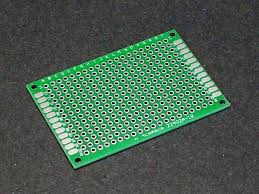What affects my pcb quote? Many things affect the cost of a quote for a PCB (printed circuit board), and understanding these elements will give you options for choices when you are placing an order. First, the complexity of the PCB design is where the great variation in cost begins. A simple two-layer PCB is a great deal less expensive than a multi-layered PCB, which can be as many as 16 layers or more. For instance, a 4-layer PCB may be up to 40% more expensive compared to a 2-layer PCB due to the additional layers and manufacturing steps. The size of the PCB also influences the price quote, as larger boards require more material and processing time. For example, a PCB with a size of 12 x 12 cm can have a cost of roughly $0.10 each, while a 30 x 30 cm board may go as high as $0.50 for each unit.
The number of units you wish to order also affects your PCB quotation directly. Large numbers definitely lower the price per unit due to economies of scale. For example, ordering 100 units may cost $5 each, while ordering 1,000 units could bring the price down to $3 each. Another critical factor is the type of materials used in PCB fabrication. Boards made with high-frequency materials like Rogers 4350B or materials that are RoHS compliant often come with a higher cost, with prices potentially doubling depending on the material specifications. A good example is that of the use of Teflon-based materials for high-speed, high-frequency PCBs used in telecommunications, where the costs can exceed $100 a unit.

The other key factor to be decided is the lead time required for the project. As faster turnaround time means expedited production for the manufacturers, premiums are usually charged for such services. Standard lead times for PCB production run 10 to 14 days, but if you need to get in a 3-day turnaround, you may face up to a 30% increase in costs. Additionally, there are PCB assembly services that can tack more onto the cost of your quote. If your PCB requires soldering or any other surface-mount technology (SMT), this too affects the cost. The cost of assembling can vary between $0.10 to $1 per component, depending on the complexity and labor needed.
Another factor that can raise the price is the complication of the design and the technology to be used for prototyping. Designs with intricate layouts or tight tolerances, or designs requiring special testing, such as electrical or thermal testing, involve additional costs. For instance, a PCB that needs X-ray inspection may add an additional $500 to the cost of a prototype.
These factors go into the final quote of a PCB, and tweaking some of these parameters-lower complexity, higher volume, longer lead time-can reduce costs. Understanding these variables helps in getting an accurate and competitive price for your particular needs in PCBs.